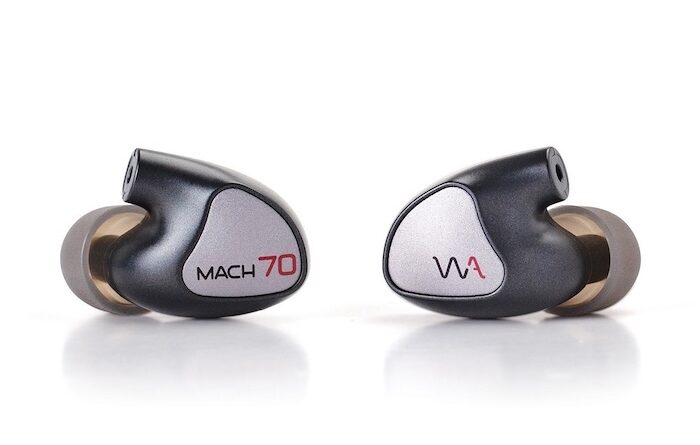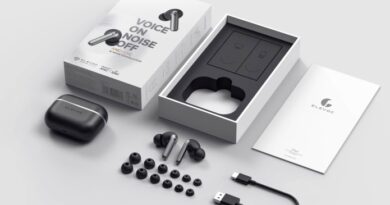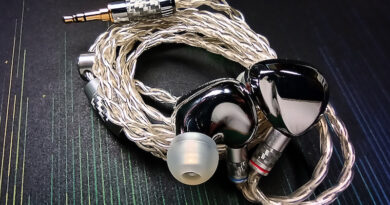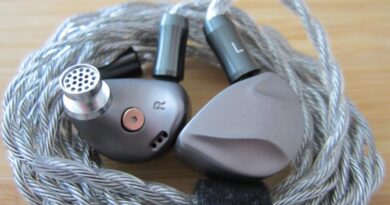Westone Mach 70 7BA Universal IEM Review – Be Yourself, Everything Else Is Taken
My only experience with Westone dates back ten years or so to the ($500) W40, which I recall as sounding very good but very “BA-ish” which is to say very fast and revealing, with precise but somewhat flat subbass and a very detailed but slightly hot treble. Today’s subject, the $1,399 Mach 70 also utilizes an all-BA (14 driver) design, but plays on a much higher plane sonically.
I won’t belabor the externalities except to say that as with the original Lexus 400, the MACH 70 looks fairly stark for its price tag—it eschews the elegant metal casings and jewel-like designs of its price peers in favor of a much more utilitarian polycarbonate housing. I also really don’t get why Westone doesn’t visually differentiate the (co-flagship) MACH 70 from their identical-looking lower-tier offerings, which start at $300. Like the Lexus, though, the MACH 70s build is flawless and (their surprisingly light weight notwithstanding) these feel more solid than they look. Compact size and deep insertion provides for very good seal and isolation; comfort was excellent.
I have a couple of little nits with the bundled Estron silver-plated cable—it’s a featherweight, purty thing but a tad microphonic. More critically, it’s unbalanced (3.5mm), while these phones positively scream out for a more robust balanced cable. Rich guy problems, I realize, and it is a nice cable nonetheless.
Although slightly below average in efficiency at 42oHM/121db, the Mach 70 are largely unfussy about source—they showed perfectly well and didn’t much lose bass impact through my modestly-powered Moondrop Dawn or Hidisz S3 dongles, although as with my most things louder is better, and I got more dynamic contrast and openness when played through my Shanling M1s DAP or the (fabulous) new SMSL RAW DAC/Amp, which outputs 1.7w/32oHm. For the most part, though, I tested these with my new pet JDS 02 head amp (which is as uncolored/transparent as you’ll find for the giveaway price) utilizing files of varying quality, including (320kb) Spotify, FLAC and UHD/Atmos.
Straight up, the Mach 70 are not the expected flat/neutral studio monitors; rather I hear them as markedly W-shaped, with some added lower treble emphasis and a forward, slightly warm tone which deftly balances sounding crisp without being too lean or wiry; notes have considerable body. Very, very fit- and tip-dependent– I initially thought these missed some subbass impact until I switched to smaller Comply foams and deeper insertion, which sacrificed some low end tautness but markedly increased subbass quantity and throb.
Even so shod (and marketing notwithstanding) the Mach 70 aren’t bass cannons—bass here has more impact than depth and there’s some audible rolloff around 30Hz or so—but to my ears the low end is just about perfect; any more would render these less coherent. Low bass also retains a slightly loose, less sculpted quality which gives it a physicality and swing but will also offend purists seeking a more “reference” tuning. Upper bass, OTOH, is very snappy and taut, while retaining richness and weight. Jaco Pastorius positively slays on these.
Mids are no less forceful; vocalists are pushed slightly forward as if the band is a few feet behind them, while treble is slightly brighter than the rest, extremely well extended and very refined, in the sense of being focused and clean. Coherence is almost seamless; despite the audible bloominess of the low end there’s little-to-no blurring between frequencies.
Soundstage on these is well-rounded, but surprisingly intimate and inside-your head (think recording studio as opposed to concert hall); while adequately separated the performers are pushed towards the center of your brain, as opposed to the wider stereo spread of open-back headphones. As a consequence, imaging is less precise and instruments less localized, which isn’t a bad thing in context since it causes you to focus more on the whole performance as opposed to its discrete components. However, these would not be optimal for those seeking a precise rendering of complex orchestral works.
Technicalities on the Mach 70—speed of decay, articulation, texture—are otherwise off the charts. These reproduce percussion and reeds as well as anything I’ve heard—every hi-hat hit and reverberation and every sax trill is captured with eerie realism, while tambourine jangles sound like a live performance. Dynamics are punchy and volume contrasts very dramatic; because so much information and visceral drive is thrown at you, these can verge on fatiguing on loud, heavy material.
Attack transients and low level detail are very well captured; to evoke an old cliché, songs I’ve heard 1,000 times reveal new details (the airplane noises in “Back in the USSR” or the subtle conga beats on “Low Spark of High Heel Boys”). Yet unlike many hyper-revealing IEMs I’ve hear, the 70 isn’t “ruthlessly” revealing—it avoids sounding pristine or excessively etched.
Correspondingly, it’s not your silky-smooth IEM—poor sources aren’t sweetened and will sound especially poor. However, despite its considerable extension and transparency, the Mach 70 steers clear of the characteristically plastic, cold “BA timbre;” it imparts a warmth which audibly mitigates harshness. It’s not the most realistic timbre I’ve heard—the comparably-priced DD Sennheiser IE900 sounds a little more “organic” in the sense of being less adrenalized/peaky at the highest frequencies, even as the Mach 70 is the more revealing IEM.
So we finally get to the difficult question of value. The Mach 70 is a small, but significant step up from the genuinely great $629 BGVP DM9 (Durwood’s review here), which has comparable drive (and tauter bass) but trails in resolution and is marginally tizzier at the high end. The Mach 70 is a much better phone than the ($1100) Campfire Andromeda, which has enormous high end detail and extension but a slightly metallic timbre and, to my ears, lacks some low end slam. The aforesaid Senn IE900 is more of a pick-em, with the Westone having superior resolution and low-level nuance and the Senn leading on purity of tone.
Sonically, the Mach 70 would be endgame for many people. Shallow lout that I am, what I continue to struggle with is its aesthetics—unlike, say, Sonus Faber speakers or Ducati motorbikes, they just don’t scream out “buy me for my beauty.” Still, I know plenty of guys who blithely drop >$1000 on a bottle of Pappy or a World Series ticket; they’d be much better-served to buy the Mach 70 instead. It’s not uncolored, clinical or neutral, nor does it aspire to be, but ultimately is as viable as anything in its class. Keeper.
Disclaimer: These were sent to me for review purposes by John Creigan at the UK-based www.ksdistribution.co.uk and I thank him for that. They can be purchased from Hifiheadphones in the UK, and from different sources around the world.
SPECIFICATIONS WESTONE MACH 70
| Drivers: Single Bass Drivers, Dual Midrange Drivers, Quad Treble Drivers Frequency Response: 5Hz – 22kHz Sensitivity: 110dB @1kHz Impedance: 42 Ohms @1kHz Tested at: $1399.99/£898.99 Product Pages USA and Continental Europe: Westone Audio and Westone Audio Europe UK Purchase Link: Hifiheadphones |







